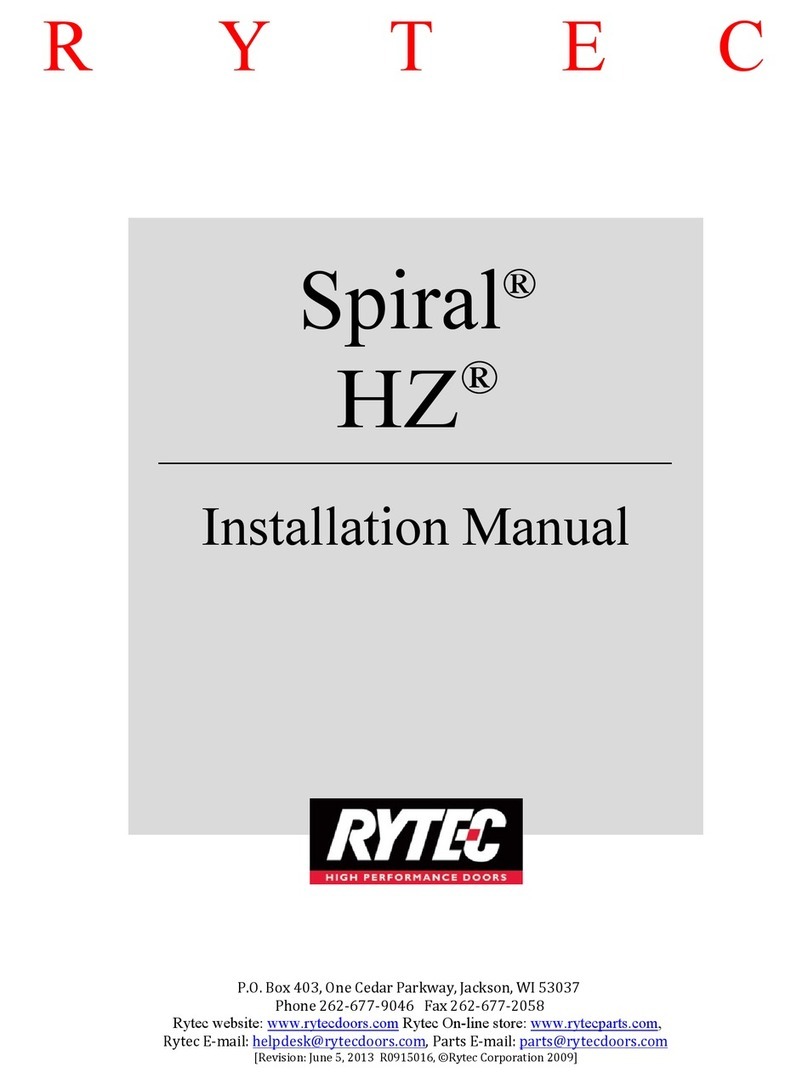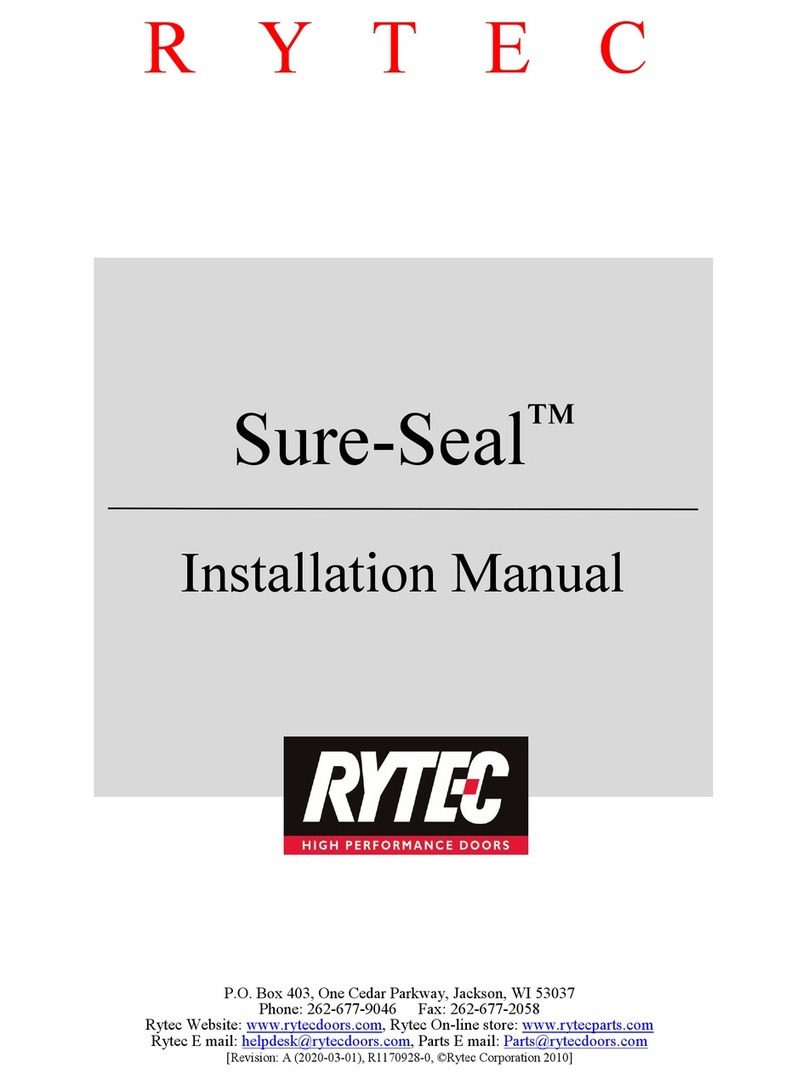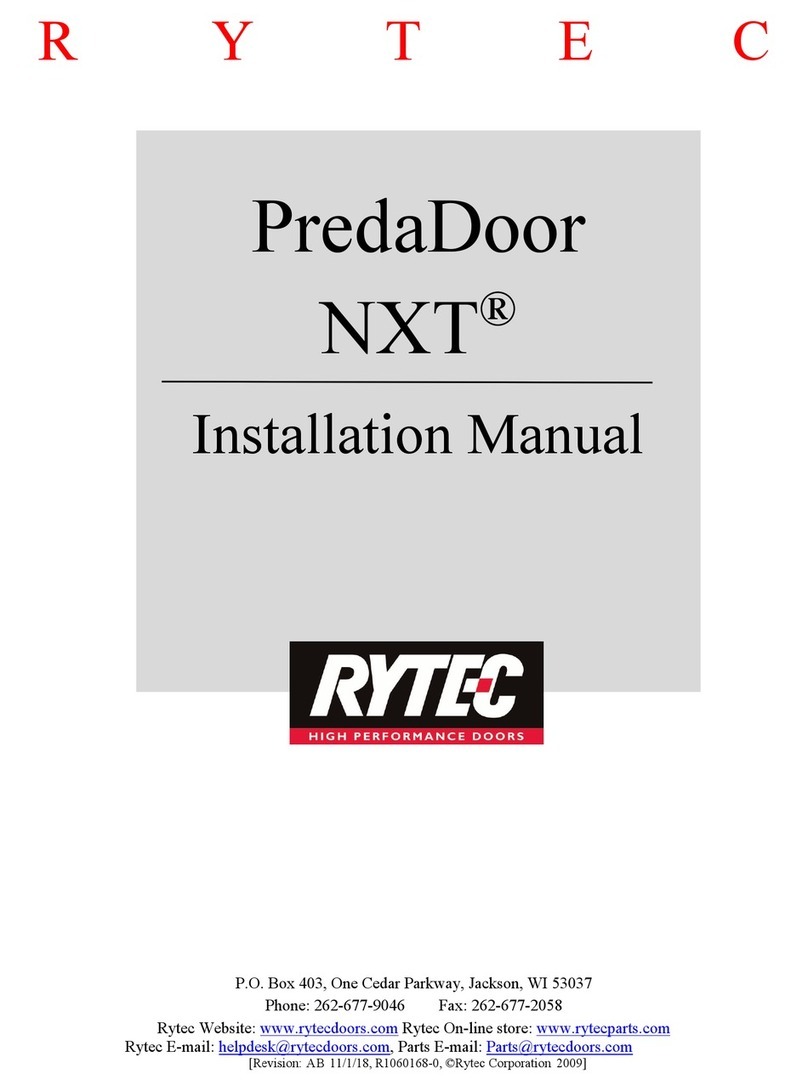
WARRANTY
The Bantam Dock Door purchased by you ("Buyer") should not be installed or operated before you read
the product manuals explaining the proper methods of installing, operating and maintaining the equip-
ment.
Rytec Corporation ("Seller") warrants that the Bantam Dock Door ("Product") sold by it to the Buyer will
be free from defects in materials and workmanship under normal use for a period of twelve months from
the date of shipment of the Product from Seller's plant. Electrical components are warranted for a
period of ninety (90) days from date of shipment. In addition, the Seller offers an extended two (2) year
warranty on the 2-ply Rilon door panel material.This extended warranty covers parts only. If within the
applicable period any Products shall be proved to Seller's satisfaction to be defective, such Product shall
be repaired or replaced at Seller's option. Such repair or replacement shall be Seller's sole obligation and
Buyer's exclusive remedy hereunder and shall be conditioned upon Seller's receiving written notice of
any alleged defect within ten (10) days after its discovery and, at Seller's option, return of such
Product to Seller, f.o.b. its factory.THIS WARRANTY IS EXCLUSIVE AND IN LIEU OF ALL OTHER
REPRESENTATION AND WARRANTIES, EXPRESS OR IMPLIED, AND SELLER EXPRESSLY DIS-
CLAIMS AND EXCLUDES ANY IMPLIED WARRANTY OF MERCHANTABILITY OR FITNESS FOR
PURPOSE.
PARTS AND ASSEMBLIES sold separately by Rytec Corporation that fail due to defects in material or
workmanship within NINETY (90) days from the date of shipment or installation will be replaced under
warranty provided installation has been carried out in accordance with Rytec procedures. This warranty
is limited to providing a replacement part only, not including freight, special charges or cost of
installation.
Any description of the Product, whether in writing or made orally by the Seller or Seller's agents,
specifications, samples, models, bulletins, drawings, diagrams, engineering or similar materials used in
connection with Buyer's order are for the sole purpose of identifying the Product and shall not be
construed as an express warranty. Any suggestions by Seller or Seller's agents regarding use, application
or suitability of the Product shall not be construed as an express warranty unless confirmed to be such in
writing by Seller.
Seller's liability with respect to the Product sold to Buyer shall be limited to the warranty provided herein.
SELLER SHALL NOT BE SUBJECT TO ANY OTHER OBLIGATIONS OR LIABILITIES, WHETHER
ARISING OUT OF BREACH OF CONTRACT, WARRANTY, TORT (INCLUDING NEGLIGENCE AND
STRICT LIABILITY) OR OTHER THEORIES OF LAW, WITH RESPECT TO PRODUCTS SOLD OR
SERVICES RENDERED BY SELLER, OR ANY UNDERTAKING, ACTS OR OMISSIONS RELATING
THERETO. Without limiting the generality of the foregoing, Seller specifically disclaims any liability for
property or personal injury damages, penalties, special or punitive damages, damages for lost profits or
revenue, services, down time, shut down or slow down costs, or for any other types of economic loss, and
for claims of Buyer's customers or any third party for any such damages. SELLER SHALL NOT BE
LIABLE FOR AND DISCLAIMS ALL CONSEQUENTIAL, INCIDENTAL AND CONTINGENT DAMAGES
WHATSOEVER.
This warranty shall be void in its entirety if failure of any product shall be caused by any installation,
operation or maintenance of the Product which does not conform with the requirements set forth by Seller
in the applicable product manuals or is the result of any cause other than a defect in the material or
workmanship of the Product.
11/21/96































